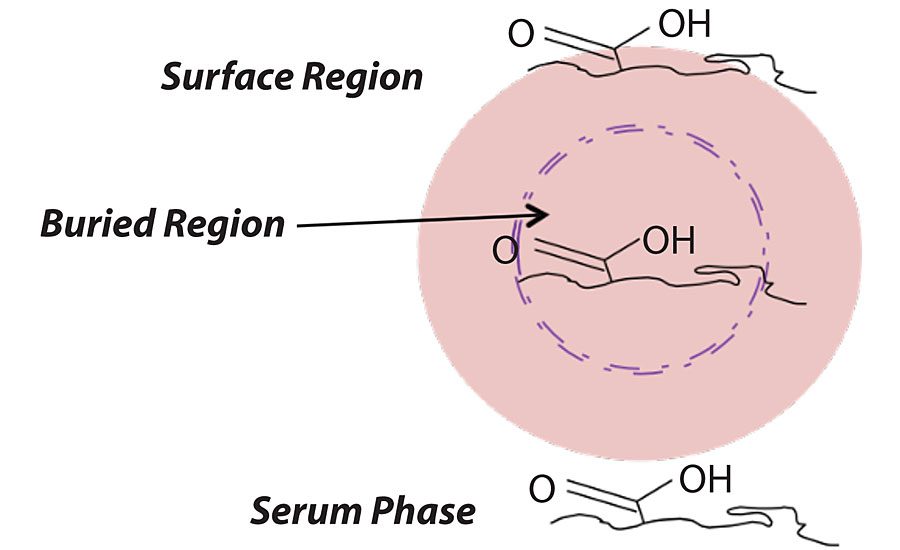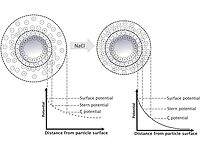Where the Acid Copolymer Is Located in the Latex Particle?




Small amounts (~1-3%) of vinyl acid monomer such as acrylic acid or methacrylic acid are commonly added to latexes to improve colloidal stability. They may also serve other functions, such as improving adhesion to substrates for coatings applications. However, unlike typical hydrophobic monomers, it is often not simple to know or measure where the functional monomer resides at the end of the polymerization. Ideally it is primarily located at the particle surface, where it can serve its intended role by providing additional electrostatic stabilization. However, it can also be buried within the particles or remain in the serum (water phase) as water-soluble copolymers or oligomers.
Buried acid groups are usually not detrimental to latex or film properties, although they represent “lost” acid groups. However the formation of water-soluble polymers can have a detrimental effect on properties. Careful analyses can reveal how your acid is partitioned between these three regions. Although often not appreciated, it is important to recognize is that how you conduct your process has a profound impact on where the acid groups reside and therefore on your final product properties. Important considerations in addition to the specific acid monomer used are pH, monomer feeding profiles, initiator type and temperature. Even with the same formulation, you may obtain very different acid group distribution if you change your process conditions.
This subject is treated in detail in several of our STEPn workshops. We welcome comments and further discussion of this topic. Please contact us via our website www.epced.com.
The “Did You Know….?” series is a bi-monthly note from Emulsion Polymers Consulting and Education (EPCEd) that is intended to present simple questions about topics that are important to those working in the emulsion polymers area. Short and concise answers to those questions are presented to educate readers and to elicit comments and further discussion. Some readers will already know the answers and be familiar with the topic while others, especially those newer to the field, will benefit from the answers and discussion. Experienced practitioners may also find new insights in the discussion. Paint & Coatings Industry magazine has partnered with EPCEd to share the “Did You Know” notes with our readers throughout the year.
Looking for a reprint of this article?
From high-res PDFs to custom plaques, order your copy today!









